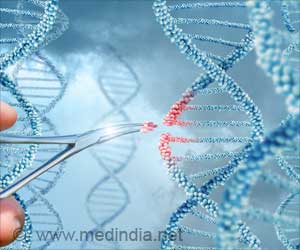Researchers have defined the gene responsible for a rare developmental disorder in children.

By using a combination of research in mice and sequencing the DNA of four patients with the disorder, the team showed that disruption of this gene causes symptoms including brain abnormalities and reduced growth, highlighting the power of mouse models for understanding the biology behind rare diseases.
"Ubiquitination, the biological pathway UBE3B is involved in, is crucial in neurodevelopment," says Dr Guntram Borck, lead author from the University of Ulm. "We have studied several patients with this rare condition, and by sequencing the coding regions of the genome of these patients we found mutations implicating the gene UBE3B". This result was confirmed by studies performed in mice by our collaborators at the Sanger Institute.
At the Sanger researchers deleted the gene in mice and found that they had symptoms that were quite similar to those in the patients with UBE3B mutations including; reduced body weight and size, and reduced size of the brain.
The studies in mice also uncovered other defects underlying the disorder. Mice with the gene deletion had reduced cholesterol levels, a symptom that was seen by the team in three of the patients. This observation suggests that a defect in cholesterol metabolism is associated with this syndrome.
"Both techniques, DNA sequencing and deleting the gene in mice, support the finding that disruption of UBE3B causes this syndrome," says Dr David Adams, lead author from the Wellcome Trust Sanger Institute. "We can now learn much more about this syndrome by studying these mice. They also represent a pre-clinical model in which we may trial potential new therapies".
Advertisement
DNA sequencing has greatly improved the identification of variants associated with developmental disorders. But the challenge still remains for researchers to identify which of these variants, there are usually several hundred identified in each patient, cause the disorder. Animal models are a complementary approach for determining the causal gene and for understanding the biology behind genetic disorders..
Advertisement
Source-Eurekalert















